Auction 21
Stamps, Postal History and Autographs
General Foreign
| Table of Contents | ||
| Prior Chapter | Table of Contents | Next Chapter |
| Lot | Photo | Description | Realized |
Lot 563 |
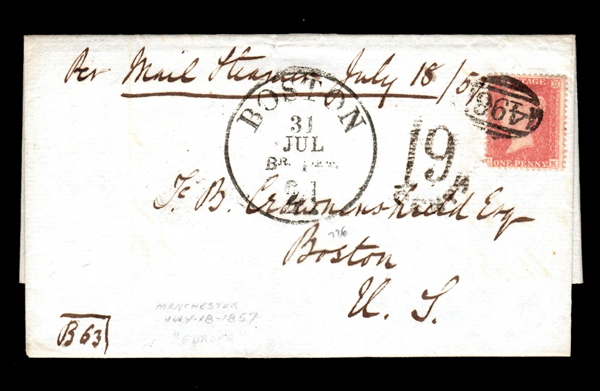 |
 Great Britain, 1857, folded letter from Manchester, England to Boston, U.S.A., a handsome companion to a Boston postmarks collection, Very Fine. Estimate $75 - 100. View details and enlarged photos | Realized $55 |
Lot 564 |
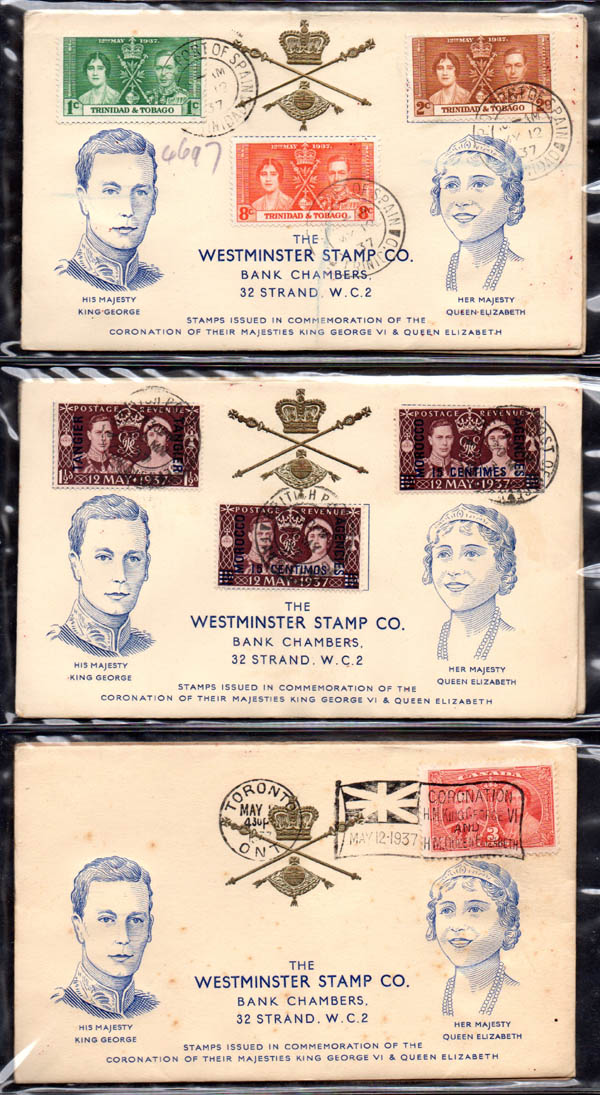 |
 British Commonwealth, 1937, King George VI Coronation First Day Covers, 60 covers mainly from islands, nearly but not quite complete, Very Fine. Estimate $75 - 100. View details and enlarged photos | Realized $150 |
Lot 565 |
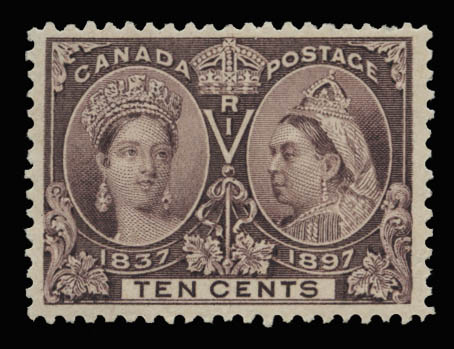 |
  Canada, 1897, Queen Victoria Jubilee, 10¢ brown violet (Scott 57), a lovely gem featuring near perfect centering within ample margins, plus rich bright color, o.g., never hinged, Extremely Fine and choice. Scott $425. Estimate $200 - 300. View details and enlarged photo | Realized $150 |
Lot 566 |
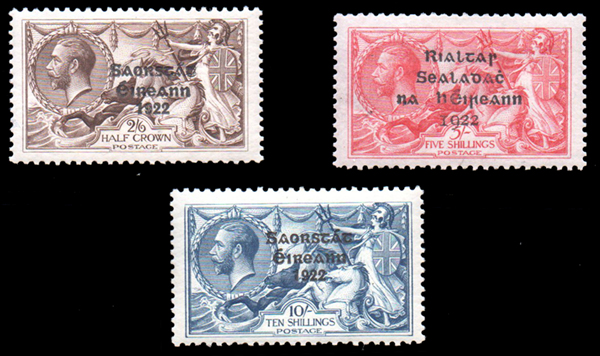 |
  / / Ireland, 1922, Dollard Provisional Govt. overprints on King George V "Seahorses", 2s6d to 10s complete (Scott 12-14. SG 17/21), vibrant color with luxurious margins on crisp white papers, o.g., some never hinged, the 5s is lightly hinged, Very Fine to Extremely Fine. Scott $685. Estimate $300 - 400. View details and enlarged photo | Realized $200 |
Lot 567 |
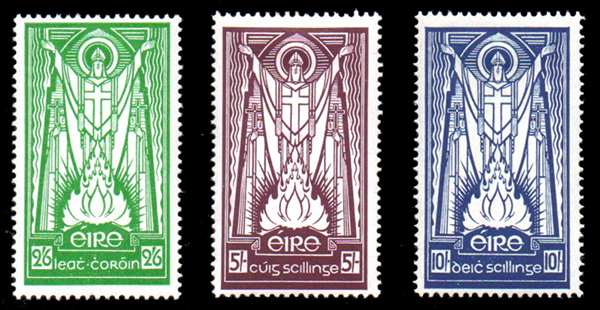 |
 Ireland, 1937, St. Patrick, 2s6d to 10s complete (Scott 96-98. SG 102/04), intense color and crisp impression, nicely centered and with bright white paper, o.g., lightly hinged, Very Fine. Scott $290. Estimate $150 - 200. View details and enlarged photo | Realized $110 |
Lot 568 |
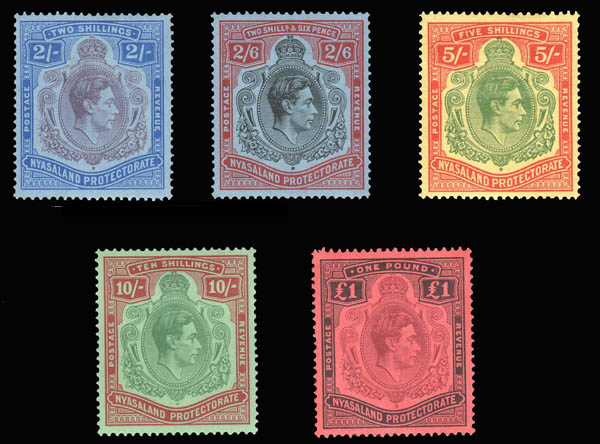 |
 Nyasaland, 1938, King George VI, 5 different high values (Scott 63-67), 2s purple & blue on blue, 2s6p red & black on blue, 5s red & green on yellow, 10s red & green on green, 1£ black & violet on red, o.g., hinged, Very Fine to Extremely Fine. Scott $116. Estimate $50 - 75. View details and enlarged photo | Realized $36 |
Lot 569 |
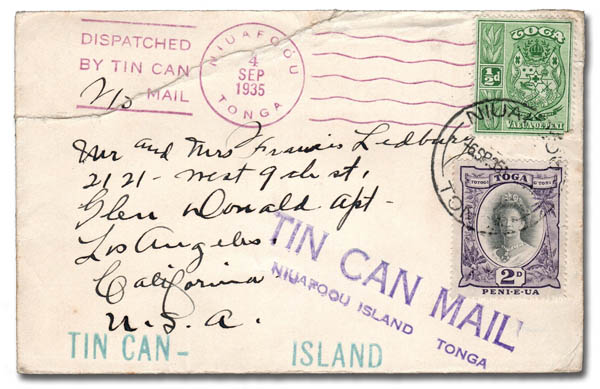 |
 Tonga, 1935, Tin Can Mail cover to California; tear across the front at top left from opening, Fine to Very Fine. Estimate $30 - 40 Tin Can Mail originated in the Niuafo'ou island of Tonga whereby isalnders would use native mulberry poles that were buoyant to assist them in swimming to passing ships holding the mail wrapped in oilcloth and tied onto these spears. The packet was tied to the line and hauled up to the ship and placed in the mailstream at the next port of call. The purser on the ship would place incoming mail to the islands into an empty kerosene or cracker can and toss it overboard for the swimmers to retrieve. Around 1920 a German trader named Walter George Quesell, who worked for Burns Philp and Co., began rubber-stamping his outgoing mail with the mesage "Tin Can Mail". It didn't take long for stamp collectors and tourists to catch on and it became a phenomenon to witness. One fateful day in 1931 or 1932, one of the swimmers was bitten by a shark. The wound was fatal, and, as a result, the Tongan government decreed that swimming for the mail was prohibited. Thereafter, the mail could only be taken to and from ships in outrigger canoes. This, too, was hazardous because of the turgid waters that surround the island of Niuafo'ou (Tin Can Island). But thereafter, the mail was marked "Tin Can-Canoe Mail." It was still a novelty, eagerly sought by stamp collectors all over the world. View details and enlarged photo | Realized $28 |
Lot 570 |
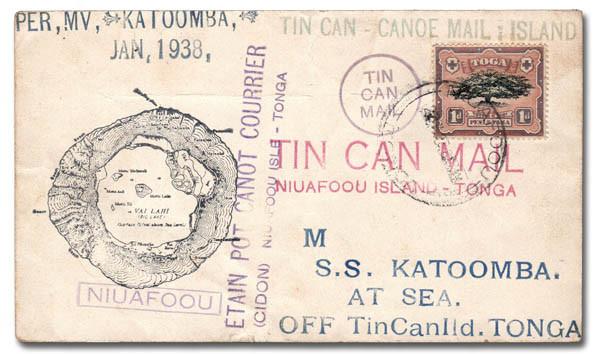 |
 Tonga, 1938, Tin Can Mail cover, Very Fine to Extremely Fine. Estimate $30 - 40 Tin Can Mail originated in the Niuafo'ou island of Tonga whereby isalnders would use native mulberry poles that were buoyant to assist them in swimming to passing ships holding the mail wrapped in oilcloth and tied onto these spears. The packet was tied to the line and hauled up to the ship and placed in the mailstream at the next port of call. The purser on the ship would place incoming mail to the islands into an empty kerosene or cracker can and toss it overboard for the swimmers to retrieve. Around 1920 a German trader named Walter George Quesell, who worked for Burns Philp and Co., began rubber-stamping his outgoing mail with the mesage "Tin Can Mail". It didn't take long for stamp collectors and tourists to catch on and it became a phenomenon to witness. One fateful day in 1931 or 1932, one of the swimmers was bitten by a shark. The wound was fatal, and, as a result, the Tongan government decreed that swimming for the mail was prohibited. Thereafter, the mail could only be taken to and from ships in outrigger canoes. This, too, was hazardous because of the turgid waters that surround the island of Niuafo'ou (Tin Can Island). But thereafter, the mail was marked "Tin Can-Canoe Mail." It was still a novelty, eagerly sought by stamp collectors all over the world. View details and enlarged photo | Realized $50 |
Lot 571 |
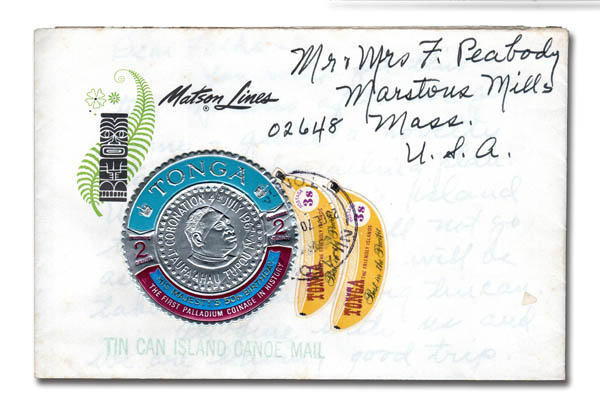 |
 Tonga, 1970, Tin Can Mail cover to the U.S.A., an interesting late usage. Estimate $30 - 40. View details and enlarged photo | Unsold |
| Table of Contents | ||
| Prior Chapter | Table of Contents | Next Chapter |







